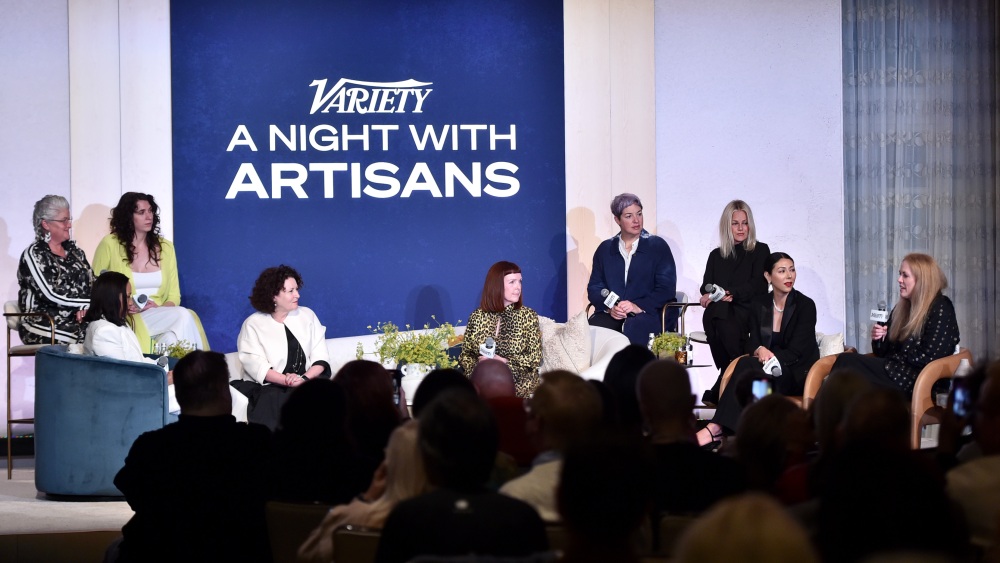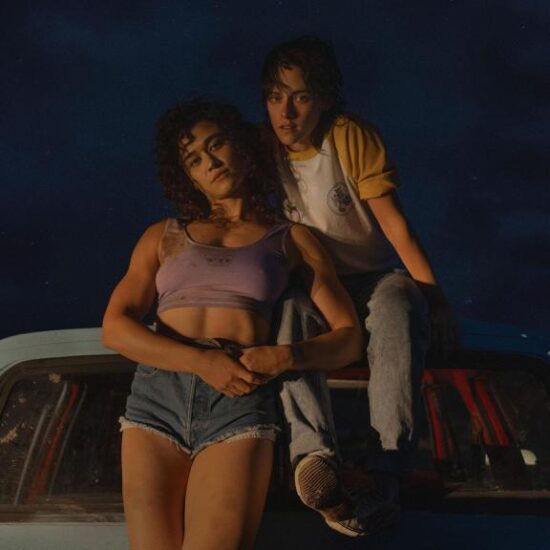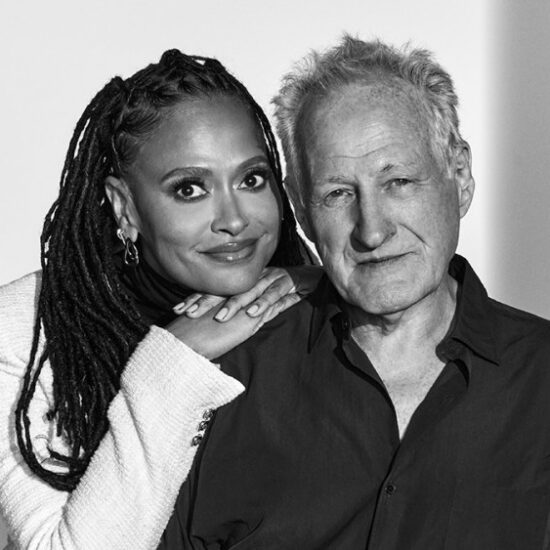
Costume designers comb through reams of fabric, scour the racks in thrift stores, and dig through bins in flea markets in search of just the right textures, styles and flourishes to help bring characters to life. For some productions, this work can be contemporary and with a limited cast. For others, it can mean hundreds of period costumes, thousands of pieces and years of preparation.
At Variety’s inaugural “A Night With Artisans,” senior artisans editor Jazz Tangcay moderated a panel of costume designers from a wide range of television series, reminding the audience of the guild’s ongoing fight for pay equity, “these shows would be naked without you.”
Many of the shows this season were in production during the pandemic, with tight COVID protocols and restrictions. Camille Benda, costume designer for Apple TV+ series “Bad Sisters,” enjoyed working with her five leading women in a unique office outside of the set. “The fitting room was actually in a shipping container, but it kind of felt like a little spaceship bubble that we could go to and talk and spend a couple hours really going through the characters.” These conversations gave them the opportunity to really dig into the individuality of each character.
Working primarily in 1970s Los Angeles, costume designer Denise Wingate enjoyed the amazing costume houses as she put together the looks for Amazon’s “Daisy Jones & the Six.” She did run into a challenge when it turned out there were three other huge shows taking place in the ’70s also in production: “So we’re fighting over things.”
But that didn’t stop her. “Every single weekend, every Saturday, every Sunday, for a year straight, I went to all the flea markets.”
Wingate also found a lot of great resources online, which contributed to more than 1,500 costumes ranging from the 1960s to the ’90s and filming from New Orleans to Greece. She came to learn that an even more valuable resource than money was time. “Having the time to curate a look and get it perfect and having time with the actors to really explore the characters… It was a real gift.”
Laura Jean Shannon, designer of the supersuit on Amazon’s superhero series “The Boys,” found budget constraints added extra pressure, but praised her team. “I’m only as good as the company I keep. It’s imperative that you keep, you know, a healthy environment for your team.” Six years ago, when they designed superhero costumes on a “TV timeline and budget,” she found the challenge “kind of outrageous.” But in the end, it gave her time the opportunity to innovate and find ways to create completely customized suits. “We reworked the way things work!”
Costume designers, especially working in television, have to be able to anticipate new challenges that could come along while episodes are still being written. Lyn Paolo, costume designer for Netflix series “Queen Charlotte: A Bridgerton Story,” began asking early on whether there would be a coronation scene for the new king and queen of England. Without waiting for confirmation, Paolo researched and started placing orders.
Paolo remembered, “The production manager kept calling me saying, ‘Why are you buying all that fabric from Paris?’ I was like, I think we’re gonna need all this gold fabric. Please believe me.” When they got the official word, she decided to “go for the gold.” Literally. “If you look at the original portraits of George and Charlotte, they’re covered in gold.”
Montgomery also had a lot of fun with details in “What We Do in the Shadows,” particularly when it came to designing for vampire Nadja (Natasia Demetriou). In the Season 4 opener, Nadja returns to Staten Island from a season in the U.K., so Montgomery “just stole from U.K. designers who I love.” Namely, Vivienne Westwood and Alexander McQueen’s tartan collection.
One dress Nadja wears later in the season involved a black and red silk with a yellow stripe. But the fabric they found didn’t have the yellow stripe. “My wonderful team, I convinced them that what we needed to do is sew a yellow ribbon onto all of these maybe 30 yards of fabric. And bless them, they did.”
On the HBO series “The Last of Us,” based on the hit video game, the world stopped in 2003 when a pandemic wiped out most of civilization. As a costume designer, Cynthia Summers had to consider what this would mean for characters living 20 years later. “The world’s stopped in 2003. And specifically, we started our story in Austin, Texas. So that was where we began, and that’s where everything ended.”
As for clothing characters would wear in this world, they had to consider, “Anything after that was black market, it was 2003 or prior. It was also what would last through a pandemic — what would last on a person’s body, traveling across North America and having to go through all these horrible things, living out in the wild.”
They had to remain faithful to the game so that fans would be happy, and they had to consider how clothing would break down over multiple episodes. So the team assembled collections of 30 versions of every costume for every character, from leads to background.
Movement was an important part of the design for Paramount+’s “Grease: Rise of the Pink Ladies,” as Samantha Hawkins needed to create costumes the actors could dance in. “It’s a lot of putting gussets in the right places when you are unlucky enough to have time to do builds,” she explained.
She also recalled the specific challenge in Episode 9, which involved paper doll costumes. “You want them to look flat and not move, but then the choreographers are going in with arm raises every 10 seconds. It’s a lot of fitting, figuring it out and what you can do to create a look that still has movement,” she said. “And then you know, we didn’t have time to build looks for every dancer on screen. So we did use a lot of vintage, and a little bit of contemporary, but the vintage, we reinforced the seams beforehand… The build team was just fabulous to get everything done.”
Marina Toybina (“Beauty & the Beast: A 30th Celebration“) expressed the importance of confidence and building a team that can complement the others well. In designing the costumes for a classic, beloved story, she knew she faced a particular challenge and a lot of expectations. “I have to really have that belief in strengthening myself as a designer and creator and a leader, to then guide my team,” she said. “A lot of it comes with a need to have self-confidence.”
Toybina added, “As a designer, you need to know your role, you need to know your weaknesses, because then you have to make up for it in your team. And make sure you’re surrounded with the people that can help you execute. And being honest, at the end of the day, I can only deliver so much without killing my team.” She emphasized one vital point: “That’s a conversation we all need to have. Toxic environments, toxic labor and creativity, you can only get the best out of all of us is if we’re in the right space, and I have my entire team in the right mental space to create the most magical place possible.”













